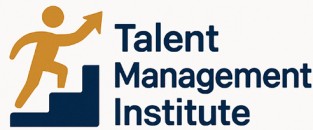
Understanding Human-Centered Leadership
Embracing a Human-Centric Approach
In today's constantly evolving business environment, the concept of leadership has undergone a significant transformation. The traditional model of leadership is giving way to a more human-centered approach that prioritizes emotional intelligence and the well-being of employees. This shift is not merely a trend but a strategic response to fostering innovation, growth, and long-term success. A human-centric approach encourages leaders to understand their employees as individuals with unique strengths, needs, and aspirations. This approach emphasizes the importance of cultivating an environment where employees feel valued and engaged. Focusing on their emotional and professional development not only enhances employee satisfaction but also contributes to a stronger, more cohesive team. By prioritizing open communication and leveraging the benefits of a people-first culture, businesses can drive significant talent development and innovation. Organizations looking to implement this model can enhance leadership skills through effective talent management strategies. Utilizing online resources, such as leadership skills enhancement courses, can equip leaders with the tools necessary to embody this approach. Ultimately, understanding human-centered leadership is about fostering a workplace culture that supports both the personal and professional growth of team members. It is about creating a work environment that not only meets the needs of the business but also nurtures the emotional well-being and engagement of employees, thereby ensuring business success in the evolving world of work.The Role of Empathy in Leadership
Empathy: The Heart of Human-Centered Leadership
In the realm of leadership, empathy serves as a cornerstone for building meaningful connections with team members. A human-centered leader recognizes the importance of understanding and sharing the feelings of others, which fosters a supportive work environment where employees feel valued and understood.
Empathy in leadership is not just about being nice; it's about cultivating emotional intelligence to navigate complex workplace dynamics. Leaders who prioritize empathy are more adept at addressing the diverse needs of their team, leading to increased employee engagement and innovation.
Benefits of Empathetic Leadership
- Enhanced Communication: Empathetic leaders promote open communication, encouraging team members to express their thoughts and concerns without fear of judgment.
- Stronger Team Cohesion: By understanding individual perspectives, leaders can create a more inclusive workplace culture that celebrates diversity and fosters collaboration.
- Increased Employee Satisfaction: When employees feel heard and appreciated, their job satisfaction and loyalty to the organization grow, contributing to long-term business success.
For those looking to deepen their understanding of how empathy can transform leadership, mastering team management is a valuable resource. This approach not only enhances personal growth but also drives organizational development.
Ultimately, empathy is a powerful tool in the leadership toolkit, enabling leaders to connect with their teams on a human level, fostering a culture of trust and mutual respect.
Effective Communication Strategies
Fostering Open Communication in the Workplace
In the realm of human-centered leadership, effective communication is not just a skill but a cornerstone of success. Leaders who prioritize open communication create a work environment where employees feel valued and engaged. This approach is essential for fostering a culture of inclusivity and innovation.
Open communication involves more than just exchanging information. It requires leaders to actively listen and respond with empathy, ensuring that team members feel heard and understood. This can significantly enhance employee engagement and contribute to a positive workplace culture.
To cultivate this environment, leaders can adopt several strategies:
- Encourage Feedback: Create channels for employees to share their thoughts and ideas. This not only boosts morale but also drives innovation and growth.
- Practice Active Listening: Leaders should focus on understanding the emotions and perspectives of their team members, which is a key aspect of emotional intelligence.
- Promote Transparency: Sharing information about business goals and challenges helps employees feel more connected to the organization's mission.
- Offer Professional Development: Providing opportunities for learning and development, such as essential soft skills courses, can empower employees to communicate more effectively.
By integrating these strategies, centered leaders can build a strong foundation for long-term success. This leadership approach not only enhances the work life of employees but also contributes to the overall growth and development of the business.
Prioritizing Employee Well-Being
Fostering a Supportive Work Environment
In the realm of human-centered leadership, prioritizing employee well-being is not just a trend; it's a necessity for sustainable business success. Leaders who focus on the holistic well-being of their team members create a workplace culture where employees feel valued and motivated. This approach not only enhances employee engagement but also drives innovation and growth.
To effectively prioritize well-being, leaders must cultivate emotional intelligence and open communication. This involves understanding the emotional and professional needs of employees, which can be achieved through regular check-ins and feedback sessions. By doing so, leaders can tailor their support to individual team members, fostering a sense of belonging and commitment.
Balancing Work-Life Integration
Another critical aspect of prioritizing well-being is promoting a healthy work-life balance. Centered leaders recognize that employees perform best when they have the flexibility to manage their personal and professional lives. Implementing policies that support work-life integration, such as flexible work hours and remote work options, can significantly enhance the overall work environment.
Moreover, offering professional development opportunities, such as online courses and leadership development programs, empowers employees to pursue growth without compromising their personal time. This investment in learning and development not only benefits the individual but also contributes to the long-term success of the organization.
Creating a Culture of Trust and Support
Building a culture of trust and support is essential for a human-centered leadership approach. Leaders should encourage open communication and provide a safe space for employees to express their concerns and ideas. This transparency fosters a collaborative atmosphere where team members feel empowered to contribute to the organization's goals.
Ultimately, by prioritizing employee well-being, leaders can create a thriving workplace culture that supports both personal and professional growth. This commitment to a human-centered approach not only enhances employee satisfaction but also drives the organization towards greater success.
Building a Culture of Inclusivity
Fostering an Inclusive Environment
Creating a workplace culture where every individual feels valued, respected, and heard is crucial for any organization aiming for long-term success. Human-centered leaders recognize the importance of building a culture of inclusivity, as it not only empowers employees but also drives innovation and growth.- Encouraging Diversity: Diversity brings a wealth of perspectives and ideas, which can catalyze creativity and problem-solving. Leaders should prioritize hiring from diverse backgrounds and ensure equal opportunities for all.
- Open Communication: Maintaining open lines of communication is a fundamental aspect of creating an inclusive work environment. Leaders should foster a safe space where team members feel comfortable voicing their opinions and ideas.
- Empathy and Understanding: Cultivating emotional intelligence in leadership allows for a deeper understanding of the unique experiences and challenges faced by different employees. This empathy can enhance workplace relationships and foster a positive work atmosphere.
Measuring the Impact of Human-Centered Leadership
Assessing the Value and Influence of Human-First Leadership
Measuring the impact of a human-centered leadership approach requires a nuanced perspective, focusing on both quantifiable metrics and qualitative feedback. To truly gauge the effectiveness of this leadership model, businesses need to consider a variety of factors that reflect the well-being and growth of their team members as well as the overall success of the organization.
- Employee Engagement and Satisfaction: One of the clearest indicators of human-centered leadership is the level of employee engagement and satisfaction. When employees feel emotionally connected and valued, they are more likely to contribute positively to the organization. Surveys and feedback tools can be excellent measures of this aspect.
- Retention Rates: A workplace culture that prioritizes human development and inclusivity often sees lower turnover rates. Leaders can track retention as a direct reflection of a leadership culture that respects and nurtures its talent.
- Innovation and Growth: When leaders foster an open communication environment, teams are encouraged to innovate and take initiative. Measuring the number of new ideas generated and implemented can provide insights into how effectively a human-focused leadership style promotes innovation.
- Professional Development Opportunities: Talents that are continuously learning and developing contribute significantly to the workplace. Monitoring participation in leadership development courses and the impact these have on employee progression and performance offers an understanding of the leadership's supportive role in talent development.
- Cultural and Emotional Intelligence: Assessing the cultural and emotional intelligence within the team offers signs of successful human-centered leadership. An increase in thoughtful, inclusive actions among employees highlights the positive influence of emotionally intelligent leaders.
- Business Success Metrics: Ultimately, the success of any leadership approach can be linked to business outcomes such as profitability, market expansion, and client satisfaction. Human-centered leadership not only cultivates a positive work environment but also drives long-term business success by developing a resilient and dedicated workforce.
By consistently evaluating these areas, organizations can understand the tangible and intangible benefits of a human-centered leadership model that prioritizes the needs and development of its people alongside achieving business objectives.













